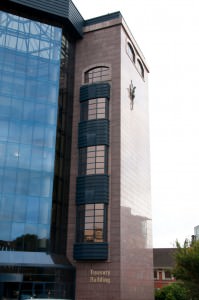Iceland’s Economic Meltdown
A meteoric rise to prosperity is followed by an equally rapid economic descent
Written by Tejas Shah, Staff Writer
Traditionally, Icelanders were never pampered with the fast cars and large homes that their American and European counterparts enjoyed. The nation was a close-knit group, with a population slightly larger than Pittsburgh, Pennsylvania, economically dependent on the fishing industry and bio-fuel generated by the active volcano on their land. However, the onset of a number of fortuitous circumstances allowed the tiny island nation to experience a dazzling rise to prosperity before falling victim to a major economic meltdown in 2008. How can we account for such a dramatic turn of events?
Iceland’s celebrated rags-to-riches story began in the Nineties when free market reforms, fish quota cash and a stock market based on stable pension funds enabled Icelandic entrepreneurs to invest in international credit. This was new to most Icelanders because they previously lacked the capital and disposable income necessary to make investments. Icelanders mostly invested in Britain and Denmark; for example, in 2004, Icelanders spent £894m on shares in British companies. These investments proved to be successful because in just five years, the average Icelandic family saw its wealth increase by 45 per cent.
[pullquote]Iceland’s corporate debt leverage exceeded its GDP by 300%, which was an astounding 4 times greater than the US corporate debt leverage.[/pullquote]Having ranked 3rd in the United Nations’ 2009 Human Development Index, the complete collapse of Iceland’s financial system four years ago is grave reminder of the immense impact of the global economic crisis. No country was affected as dramatically as Iceland, which saw its inflation rise by over 18% in 8 months, and the stock market drop by over 90% towards the end of 2008.
So, what actually triggered this major collapse? During the years leading to the downfall, Iceland’s corporate debt leverage exceeded its GDP by 300%, which was an astounding 4 times greater than the US corporate debt leverage. This astronomical level of debt was financed by the chartered banks through mostly foreign denominated currency; one of the most volatile means of financing. Icelanders were assured safety by the banks because of the existence of the IMF (International Monetary Fund) which serves to bail out sovereign states at the international level. This induced people to heavily invest in foreign currency which crippled their long-term investments during the economic downfall.
The second trigger was parliament’s inability or reluctance to scale back foreign investment when price inflation increased and the value of the króna depreciated because foreigners started to feel nervous about Iceland’s sudden rise to prosperity. This period was infamously dubbed the Geyser crisis since investors suddenly started purchasing credit default swaps to compensate for potential losses.
The last trigger was the heavy investment in subprime mortgages that backfired in August 2007 when BNP Paribus suspended Iceland’s 3 major investment funds heavily invested in the subprime market. This was the last straw.
Almost a year later, Bear Stearns went bankrupt and investors immediately started pulling out of Iceland. Despite public relations moves by the Icelandic government, investor confidence was not renewed. According to Armann Thorvaldsson, the former head of the UK branch of Kaupthing, Iceland’s largest bank, one of the biggest mistakes they made during the crisis was not cutting down the “stock market positions of [their]best clients more aggressively.” This exacerbated the conflict because
while stock market positions began to deteriorate, the bank continued to support them.
So, who’s to blame? Fingers point in many directions. In March, Iceland became the first country to launch a criminal trial against their former Prime Minister, Geir H. Haarde, for his inept decision making and failure to prevent the escalating crisis.
“None of us realized at the time that there was something fishy within the banking system itself, as now appears to have been the case,” Geir Haarde told the court when the trial began.
In some ways, he was right. Since everything was working well, no one wanted to believe that the nation’s sudden rise to prosperity was only a mirage. Unfortunately, the unthinkable happened and today, Iceland stands in the ruins of the economic meltdown that rippled throughout the globe.
ARB Team
Arbitrage Magazine
Business News with BITE.
Liked this post? Why not buy the ARB team a beer? Just click an ad or donate below (thank you!)
Liked this article? Hated it? Comment below and share your opinions with other ARB readers!
























Share the post "Iceland’s Economic Meltdown"